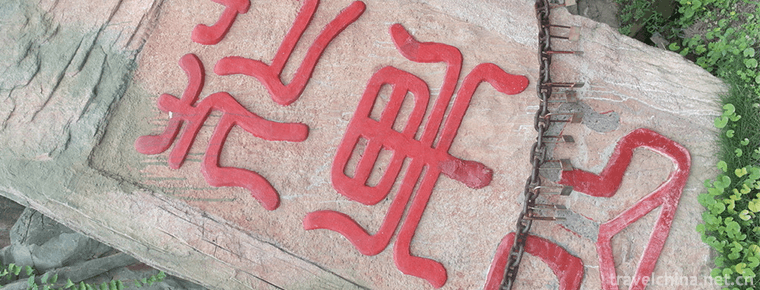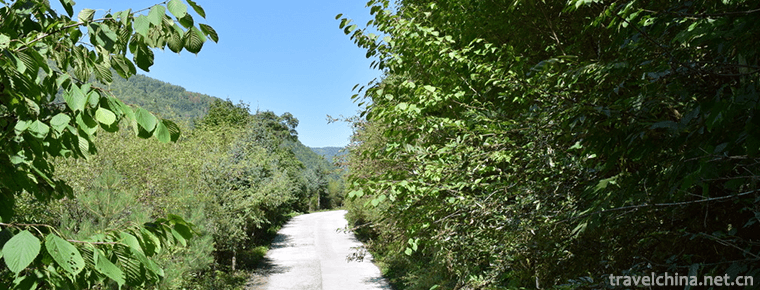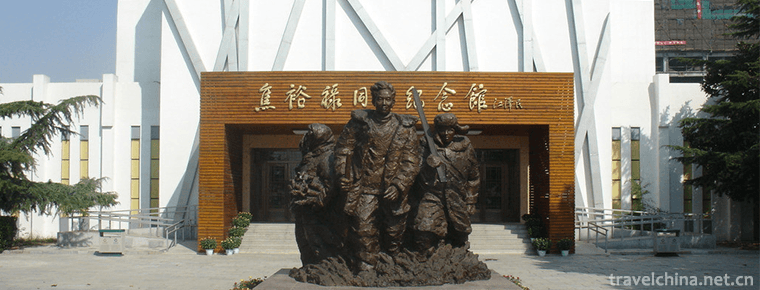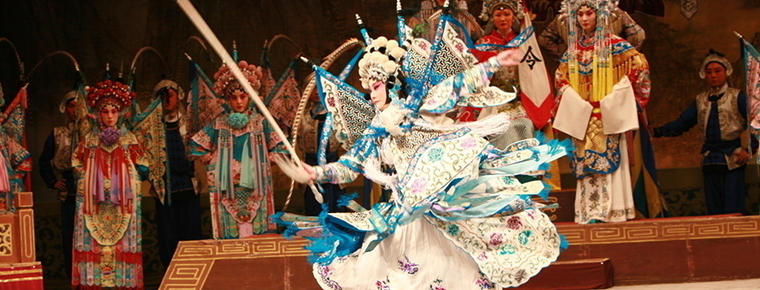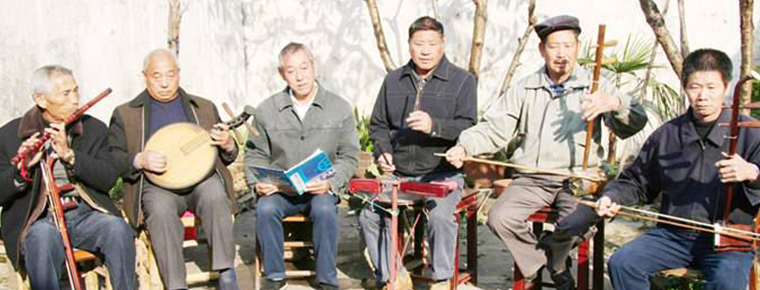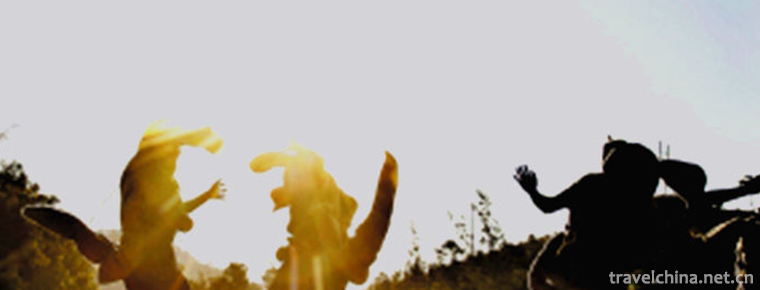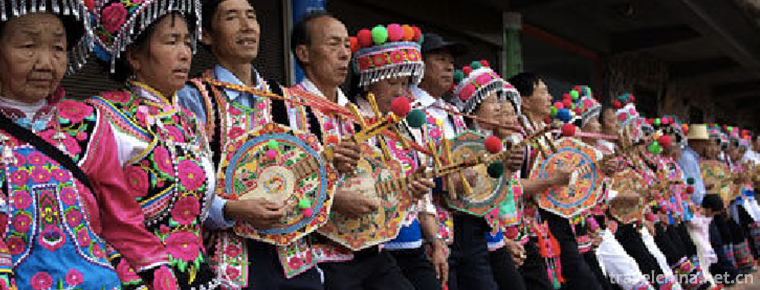Firing Techniques of Wuzhou Kiln Ceramics
Firing Techniques of Wuzhou Kiln Ceramics
The traditional firing technique of Wuzhou kiln is a local traditional handicraft technique in Zhejiang Province. Wuzhou kiln is located in Tiedian Village, Langya Township, Jinhua City. Jinhua was named Wuzhou in the early Tang Dynasty because it was "located in the place where Venus and Wunu competed for beauty" and had a history of more than 1800 years and a splendid culture, which could be regarded as a trend of the ages. It has been listed in the second batch of intangible cultural heritage list of Zhejiang Province.
History of Wuzhou Kiln
As early as the late Neolithic Age more than 4,000 years ago, Chinese ancestors used local clay and lime glaze to make pottery. Wuzhou kilns are widely distributed, mainly in Jinhua, Wuyi, Dongyang and other places. From the Shang and Zhou Dynasties to the late Eastern Han Dynasty, it was fired into mature blue-glazed porcelain with brown glaze; Buddhism prevailed in the Southern Dynasty, lotus flower became a common ornament; the early Tang Dynasty was successfully fired into opaque glaze and flower porcelain; after the Song Dynasty, there appeared painted porcelain, blue-white porcelain and black porcelain; until the Ming Dynasty, blue-and-white porcelain was produced. It lasted for more than 2700 years and found more than 600 ancient kiln sites, which is rare in China.
In addition, the moulding process of Wuzhou kiln has its unique artistic beauty. As early as the Eastern Han Dynasty and the Three Kingdoms period, Wuzhou kiln has been able to skillfully use the skills of kneading, pasting, carving, hollowing, etc. to show people, animals, pavilions and other objects, lifelike and vivid. By the Song Dynasty, high relief appeared. During this period, the stacking technology represented by opaque glazed double dragon plum bottles had reached the peak of perfection. It vividly reproduced people's religion, folk customs, clothing, architecture, acrobatics and other forms of life at that time, which had not been seen in other kilns such as Yueyao kiln. The status and influence of Wuzhou kiln in the history of Chinese ceramics are indelible.
innovate
The application of cosmetic clay on porcelain was an innovation in the ceramic making process of Wuzhou kiln craftsmen in the Western Jin Dynasty. Cosmetic clay is a kind of decorative raw material. It is white porcelain clay with low iron oxide content. After careful washing, it has fine texture and is milky white. The use of makeup clay can make the original rough body surface smooth and smooth, making the original matrix darker gray or dark purple get clever coverage. Appliances that have used cosmetic clay appear smooth and plump glaze after firing, which greatly improves the quality of the products and the aesthetic feeling of the appliances.
It is generally believed that the use of cosmetic clay in utensils may have occurred in the Sui and Tang Dynasties. The archaeological discoveries of Wuzhou kiln prove that it had been widely used as early as the Western Jin Dynasty. For example, a porcelain bowl unearthed from the tomb of Jin Yuankang in Jielu Village, Quzhou City (298) was covered with makeup clay on its surface; the carcass surfaces of the Eastern Jin porcelain bowls, calves and pots unearthed from Wuyi Lutan Village and Wangzhai Village were covered with a layer of milky white makeup clay. In the Eastern Jin Dynasty, cosmetic clay was used in Deqing kiln and other places in Zhejiang Province. Cosmetic clay as a decorative material continued to be used until the Tang Dynasty, and was widely used as an advanced technology in kilns all over the country. Cover the body with makeup clay, and the glaze has a beautiful and bright appearance. The appearance of cosmetic clay has played a positive role in popularizing the porcelain industry, expanding the range of raw materials and improving the quality of porcelain. Mr. Feng Xianming, a famous archaeologist, once praised the use of cosmetic clay in Wuzhou kiln as "a significant creation".
Opacified Glaze
Wuzhou kiln has already fired blue-white opaque glaze in the early Tang Dynasty. Up to now, at least six Wuzhou kilns have been found to have fired blue-white opaque glaze in the early Tang Dynasty. For a long time, the traditional view has been that the production of opaque glaze in Wuzhou kiln was introduced by the craftsmen of Shijun kiln in Linan, the capital of the Southern Song Dynasty. Therefore, the opaque glazed porcelain of Wuzhou kiln is called Nanjun or imitation Jun. The discovery of opaque glazed pottery in Wuzhou kiln in the early Tang Dynasty objected to the traditional viewpoint and was of great significance in verifying the important historical position of Wuzhou kiln.
Wuzhou kiln opaque glaze was successfully burned as early as the early Tang Dynasty. The opaque glaze is caused by the pure two-phase separation. There are few glaze bubbles and residual crystal images in the glaze. The glaze surface is azure or moonwhite, and the sky blue is very few. It has a jade texture and is crystal and beautiful. Since its inception in the early Tang Dynasty, this opaque glaze has continued to the Yuan Dynasty, and has been in vogue, making glaze color a further means of beautifying porcelain, which is rare in the history of China's ceramics.
Mr. Feng Xianming believed that the quality of Wuzhou kiln porcelain was second only to Yue kiln before Tang Dynasty. Wuzhou kiln was the most precious legacy left by ancient Jinhua ancestors to the Chinese nation. Wuzhou kiln is outstanding in the innovation of glaze color. In the mid-Western Han Dynasty, it began to sprinkle brown glaze on the green glaze, which increased the ornamental value of the objects.
New Jun Porcelain
In 1976, archaeologists salvaged more than 10,000 pieces of Yuan Dynasty Chinese ceramics, hundreds of lacquer wares and hundreds of metal objects, and more than 100,000 coins in the Xin'an Sea off the southwestern corner of South Korea. The last coin in the shipwreck was "Datongbao". It can be seen that the time of the accident should be in the Yuan Dynasty. Besides the products of Longquan in Zhejiang and Jingdezhen in Jiangxi, there are also many products of Wuzhou kiln. At that time, many people thought that it was a "imitation Jun kiln" in the north, because the opaque glaze on the utensils was very similar to the Jun kiln. Later, experts unearthed such specimens in Jinhua Tieton kiln to solve the mystery. There is a three-legged basin in the collection of the Imperial Palace in Taiwan, which is similar to the water from Xin'an Sea, Korea. It is likely that it is also the product of Tiedian Kiln. It can be seen that Tiedian Kiln also fired ceramics for Palace display.
"Xin'an Shipwreck Relics" describes the fetal bones of Jun-glazed porcelain in water as follows: "Jun-glazed porcelain has flowerpots, water dishes, pot-shaped water injection, etc. Because the glaze medicine and clay are obviously different from the Jun glaze of the Yuan Dynasty in the north, it is possible that the South imitates the products of the north. The matrix earth is slightly rougher than that in the north. In addition to the black glaze, there is gray on the glaze. After twice glazing, the matrix earth is slightly rougher than that in the north. Nevertheless, no cinnabar emits red, no milky white, only beautiful sky blue. "Although two glazes were applied, no glaze was applied on the feet, the bottom and the outer bottom of the periphery, and there were traces of two glazes applied at the junction of the exposed part. The exposed part looks gray with brown, rough tire soil, gray-white, blue-blue glaze, mottled, thick glaze but not flowing, the accumulation part is gray-white and deep, cinnabar is completely not reddish.
How Wuzhou kilns are exported? Experts believe that they are exported from Hangzhou or after transshipment to Mingzhou (now Ningbo, Zhejiang Province). In recent years, when cities and towns in Hangzhou and Ningbo were constructed, fragments of Tieton kiln products were found. More than 10,000 pieces of Yuan Dynasty Chinese ceramics coming out of Xin'an sea area in South Korea are likely to start from Hangzhou. Celadon comes from Longquan kiln system, Qingbai comes from Jingdezhen, Jun glaze comes from Jinhua area. At that time, most of the export goods had to be transshipped from Hangzhou. History records that the sea route was from Hangzhou to Japan at that time, and it could be reached seven days and seven nights downwind. In Tang, Song and Yuan Dynasties, Wuzhou kiln opaque glazes were exported to foreign countries in large quantities, which contributed to the exchange of world economy and culture.

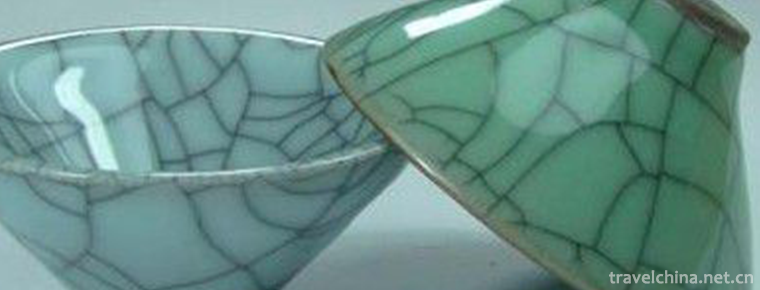
Firing Techniques of Wuzhou Kiln Ceramics
-
MountHuaguoshan
Mount Huaguoshan (Lianyungang Huaguoshan Scenic Area) is located at the middle foot of Nanyuntai Mountain in Lianyungang City.
Views: 304 Time 2018-12-06 -
Guangegou National Forest Park
Guan'e Gou National Forest Park, located in the outskirts of Chang County, Longnan City, Gansu Province, consists of Guanzhugou, Goose Lou Gou, Mulong Gou, Miaogou and other scenic spots
Views: 221 Time 2019-01-13 -
Jiao Yulu Memorial Park
Jiao Yulu Memorial Park (formerly Jiao Yulu Martyrs Cemetery) was built in February 1966. It is located on the old embankment of the Yellow River in the north of Lankao County, Kaifeng City
Views: 177 Time 2019-01-22 -
Qingdao Wine Museum
Qingdao Wine Museum is located at No. 68 Yan'an Road, North District of Qingdao City. It is an underground museum with popular science education, collection and display
Views: 207 Time 2019-02-07 -
Traditional drama
Chinese drama mainly includes opera and drama, and opera is the traditional Chinese drama. After a long period of development and evolution, Baihua Garden of Chinese opera has gradually
Views: 178 Time 2019-04-21 -
Haicheng Hornplay
Haicheng trumpet opera, the local traditional drama of Anshan City, Liaoning Province, is one of the national intangible cultural heritage.
Views: 363 Time 2019-05-02 -
Lanxi stall spring
Lanxi Spring Spring Spring Spring is an ancient form of sitting and singing art, which was formed and popular in Lanxi area in the Midwest of Zhejiang Province, Jinhua and Quzhou, and belongs to Nanci
Views: 165 Time 2019-05-10 -
Uygur Medicine
Uygur Medicine magazine provides medical workers with good opportunities for education, continuing education and academic exchange platform, and is committed to improving the comprehensive quality of
Views: 306 Time 2019-06-26 -
Tiger Sheng of Yi Nationality
Tiger Sheng of Yi nationality is a magical traditional dance of Yi nationality. The Yi people worship tigers and take tigers as totems. It has been said since ancient times that tigers are the people
Views: 189 Time 2019-07-12 -
Left Foot Dance of Yi Nationality
The left foot dance of the Yi people, which is called "Gouzha" in the Yi language, falls to the left foot. Dao Guangnian's Dingyuan County Chronicle says, "It's called falling on the le
Views: 363 Time 2019-07-13 -
Tsinghua University
The campus of Tsinghua University is situated in northwest Beijing on the site of the former imperial gardens of the Qing Dynasty, and surrounded by a number of historical sites.
Views: 207 Time 2019-08-31 -
Suining social security
By the end of 2019, there were 23400 registered unemployed people in Suining, with the registered unemployment rate of 3.62%. 855000 people participated in the basic endowment insurance for urban employees, an increase of 114800 over the end of last year.
Views: 150 Time 2020-12-16
